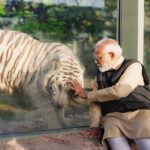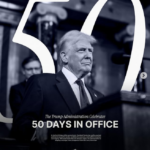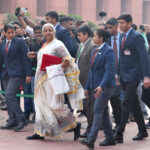I was the first one in the family to join the Indian Army. Both my father and grandfather were in the Civil Services and served in what was then known as the United Provincial cadre. I was a student at the Modern School, Barakhamba Road, where I studied for 10 years from 1948-58. We had a great Principal, MN Kapur, who in early 1958 called me to his office one morning after the assembly and said,, “Why don’t you apply for the National Defence Academy (NDA) to join the military.” I was taken by surprise, but there was no way one could have said anything other than reply in the affirmative. He was such a towering figure for us and we all looked up to him. He met my mother and convinced her to let me join the army. After that, the school worked on me, my mother worked on me and my father motivated me.
I joined the NDA in 1958 and was commissioned in the Indian Army in ’62 in the 5/3 Gorkha Rifles soon after the Sino-India war. As it turned out, my first posting, which was in NEFA, (now called Arunachal Pradesh) was one of the earliest defining moments in my fledgling career. It gave me the opportunity to go through the tactics and design of the Chinese Army. This resulted in a long march from Tezpur to Bomdila, then to Sela Pass and on to Tawang. Now, that gave a very good start to my infantry career and, that too with the Gorkhas, one of the toughest fighting units of the Indian Army.
The next defining moment in my career came in the ’71 war when I was a Major, battalion second in command of 5/3 Gorkha Rifles in the Kargil sector. I was assigned the task to capture certain enemy posts along the Shingo river. Being a senior Major, I was given the command of two companies and was made the Task Force Commander. This operation remains very memorable because from December 7-17, 1971, we captured seven Pakistani posts, including a feature called Hathi Mata. In the words of Lt Gen KP Candeth, who was then the Western Army Commander, the entire operation in the Ladakh area would have been meaningless if Hathi Mata had not been captured because it overlooked the vital Leh-Srinagar highway. Since, I was the Task Force Commander, leading the operation; it gave me tremendous confidence of leading troops in battle.
There are a couple of incidents from this operation that has stayed with me. The first one was on December 12 during our attack, on the third Pakistani post, parts of which was alongside the Shingo river, although the actual post was on higher ground. There was a beautiful mosque inside that post. We captured the post, but the enemy was shelling us quite heavily from all sides and we need a cover to protect the troops. I felt that the mosque was the safest place to take cover. So, my men, as many as we could, took refuge inside the mosque. But for hours the enemy kept shelling the entire area, except the mosque.
It was around, 9 or maybe 10 pm, when I suddenly realised that the fire was getting closer to the mosque. It was on pure instinct that I asked my troops to get out of the mosque. No sooner I gave the command, the mosque was hit and was reduced to rubble in a matter of seconds, but my men were safe. It made me realise that one should heed to one’s inner voice even in the heat of the battle.
The second incident occurred just before the final push for Hathi Mata at approximately 18,000 feet. We marched through the night and the troops were in position for the final assault at around 4 am. They were exhausted, but I wanted to attack the enemy post before sunlight, because they were at an advantage being on top and could have wreaked havoc. Some of my troops voiced that it’s foolish to attack the post with exhausted troops. My response to them was: “I haven’t marched the whole night to be sitting here now. We are going, come what may. Whether it’s foolish or not foolish, I am going.” I started marching and the rest of them followed. We successfully captured the most important post in the Kargil sector. It was a very important lesson in my life because it taught the value of leadership and courage.
A defining moment in my career came in the ’71 war when I was a Major, battalion second in command of 5/3 Gorkha Rifles in the Kargil sector. I was assigned the task to capture certain enemy posts along the Shingo river
Many years later, after my retirement, in the movie Lakshya, featuring Amitabh Bachchan and Hrithik Roshan, directed by Farhan Akhtar and scripted by Javed Akhtar, most of the battle scenes in the movie, including the capturing of Hathi Mata, depict my life’s story in great detail. I was the consultant for the movie and even essayed a cameo in the film.
SUBSEQUENTLY, I was promoted to the rank of Lieutenant Colonel to command a unit, when a very unusual thing happened. Usually, an officer who is commissioned into a regiment, which in my case was the 5/3 Gorkha Rifles, stays on until he commands that battalion before moving on. After spending 17 years with the Gorkhas where I was expected to become its Commanding Officer, the Army HQ decided to transfer me to Punjab Regiment to command 3 Punjab, located on the LOC. That is a very big change in any infantry officer’s career—from Gorkha troops to a regiment comprising Sikhs and Dogras. However, this transition helped me to understand the academic side of military science and the art of military warfare in varying circumstances. It helped me to learn how to apply the various theories that one learns in the junior command course or higher command course and eventually the staff college in a practical environment.
IN 1986, I was posted on deputation to the National Security Guards (NSG) as the Deputy Inspector General, Operations and Training. At that time the NSG was still being raised and evolving itself into an elite counter-terrorism force. Once again, I was involved with two very interesting developments that left a lasting impact.
The first was Operation Black Thunder after Sikh militants had taken control of the Golden Temple the second time in 1988. It was one of the earliest operations in which the NSG was engaged. I wrote the entire operation by hand in complete secrecy. Only a few people in the NSG and the then Prime Minister, Rajiv Gandhi, knew about it. The critical aspect of this operation was laying a siege around the Golden Temple.
While the operation was still in progress, political powers felt that this siege needed to be lifted to avoid controversy. However, we already had the PM’s assurance that he wouldn’t succumb to political pressure. As a result, the Operation Black Thunder, which was conceived and executed from the start to the end by the NSG, was extremely successful as not a single soldier or an innocent person died. Only the terrorists were killed and there was no damage to the shrine either.
The second one was in the middle of January 1988.By this time, I was given the additional charge of the National Anti-Hijack Force Commander of the NSG. Earlier, in September 1987, a Frankfurt-bound Pan Am flight was hijacked at the Karachi airport by the terrorists belonging to the PLO. A lot of hostages were killed in the operation to neutralise the hijackers; it was a disastrous operation. Against this background, the Prime Minister ordered the NSG to carry out a simulated anti-hijacking exercise.

Consequently, we prepared an exercise, replicating a live situation, called Exercise Sour Grapes. Once again, this exercise was complete handwritten by me and apart from the PM, only the DG and IG of the NSG were aware of its existence. It was an actual anti-hijacking exercise that was conducted in India for the first time, if not the world. The purpose of maintaining secrecy was simple: the entire senior bureaucracy of the Government of India, including the Cabinet Secretary, Foreign Secretary, Home Secretary, Ministry of External Affairs etc. and the intelligence like the IB and R&AW had to be exercised.
When the exercise commenced in the morning, simulating hijacking of an aircraft that was flying from Delhi to Bombay (Mumbai) via Aurangabad; it created tremendous commotion all around, including the press. Without going into the operational details of the exercise, when the aircraft was forcibly landed at Aurangabad, even a “dead body’ was thrown out of the aircraft for good measure. Just that it was a dummy. But it had its effect: there was panic all around.
While the exercise was in progress, I was sitting in the Cabinet Committee on Security Operations room in the Cabinet Secretariat along with senior secretaries of the government. When the dummy was thrown out the aircraft, they said that this was not an exercise, but a real hijack unfolding. The press was working overtime and radio stations, including the BBC, started broadcasting news of the hijack.
A day later, the DG NSG received a call from the PMO, expressing the desire of the PM to meet the person who had written the exercise. The DG offered to meet the PM, but was told that PM wanted to meet the person who actually wrote the entire exercise. So, I went to meet the PM, thinking that I would be court-martialled for conducting an exercise that created so much confusion.
When I was ushered into his office, he stood up to shake hands and said, “So, you are the guy who wrote the exercise.” I could discern that he was not particularly annoyed when he said that. There after followed a dialogue by him saying, “You did a good exercise, but made a very big mistake.” The manner in which he said it, gave me the confidence to reply, “What mistake did I make?”His reply was, “You should have called a press conference.” Without blinking an eyelid I said, “I am a military man; I do not know how to conduct a press conference.” He responded “You don’t know how to do a press conference? But I want you to do a press conference.” “Ok, I will do it, if you want it,” I replied. He retorted, “You just said you don’t know how to conduct one.” Confidence building up in me with this ongoing dialogue, I replied, “I will learn it in the next one hour and have the press conference”. “Ok, learn it in one hour and hold a press conference at the Oberoi Hotel at 3 pm this afternoon,” were his parting words. We held the press conference, which was attended by over 70 journalists where I explained the exercise to the press. I can say with all humility that the exercise served its purpose beautifully in preparing us for anti-hijacking operations.
In 1986, I was posted on deputation to the National Security Guards (NSG) as the Deputy Inspector General, Operations and Training. At that time the NSG was still being raised and evolving itself into an elite counterterrorism force
The counter-hijacking measures undertaken during Exercise Sour Grapes were written down as Standard Operating Procedures (SOPs) by me to the last detail and were approved by the Cabinet Committee on Security. Unfortunately, these SOPs were lost during the hijacking of the IC 184, probably gathering dust in some file in the government department.
During my stint with the NSG, I also underwent formal training in hostage negotiation conducted by the London Metropolitan Police. Five years later, this training came in handy during the siege of the Hazratbal shrine in Srinagar. Now I was a Major General, commanding an Infantry Division in Rajasthan. To my utter surprise, I got a call from the Army HQ directing me to go to Srinagar to be a part the negotiations along with the then Divisional Commissioner, Wajahat Habibullah, who later went on to become the Chief Information Commissioner of India.
DESPITE my protestations, I was flown to Srinagar and was given the cover of one Mr Mathur, a journalist from Delhi, because the last thing the terrorists would have wanted was to negotiate with an army officer. It was a very long drawn negotiation. There were many stories that appeared in the press about how the negotiators were going soft, treating the terrorists as VIPs and feeding them biryani, etc. However, in the end, after more than a month of negotiations we managed to get all the militants, including their leader Idris, to surrender without damage to the shine or any civilian casualties.
In 1996, I was promoted the rank of Lieutenant General and commanded a Corps in the Punjab and Rajasthan area before being posted as Director General of Infantry at the HQ in Delhi. It was the time when the Kargil war broke out and the Infantry was going through modernisation. Though, I was not directly involved with the Kargil war, I observed it from close quarters and also because it was fought mostly by infantry units with support from artillery. I was fortunate to get such varied opportunities in the Indian Army that helped me to evolve as a professional soldier.
As told to Vivek Mukherji
Journalist | Editor | Allahabadi


























































